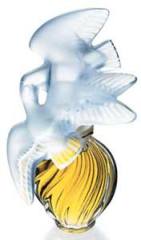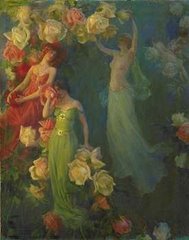Benzyl salicylate 6,7
Eugenol* 1,5
Methyl Diantilis** 0,5

Ylang Ylang 1
Methyl Ionone 4,4
Vertofix 2
Sandalwood 1
Styrallyl acetate 0,2
Phenylethyl
alcohol 2
Hydroxycitronellal 4,4
Benzyl acetate 0,4
Bergamot 2,4
Linalool 1
Linalyl acetate 3
Aldehyde C11
undecylenic 0,1
Vanillin 0,05
Heliotropin 0,2
Iris substitute Firmenich 0,05
Exaltolide*** 0,15
Muscenone Delta*** 0,15
Jasmin etoile(givaudan) 0,2
*could be replaced by clove oil
** I used this instead of Iso eugenol because it smell similar but it's not restricted by IFRA
***Both musk notes, the original has Musk ketone but since it's restricted I don't like to use it
The perfume has some similarity to L'air du Temps but is lighter and more flowery, the original has more dark sweet notes maybe from benzoin or patchouli.
Now I will experiment with this accord. For example replace the Benzyl salicylate by Amyl salicylate or cis 3 hexenyl salicylate and study the difference. I could change the Hydroxycitronellal for Lyral or the Methyl Ionone by Beta ionone or Alpha ionone. I could even try to add a new note, maybe a green note like Galbanum or a peach note like Aldehyde C14 or Nectaryl. Or leaving a note out like the rose notes like Phenylethyl alcohol. Most perfumes are inspired by the classics, by using another interpretation of the classics there could be created a whole new perfume. Mitsouko by Guerlain was based on the Chypre accord but by adding a peach note from the Aldehyde C14 it became a complete different perfume.











2 comments:
this is a very interesting post for me, I have never tried this exact experiment. On the side: Don't you go beyond IFRA's Hydroxycitronellal limits and was there a particular reason not to use Lilial?
Hi Andy, yes you're right about the Hydroxycitronellol but the orignal had the same amount and I wanted to smell how it is when used at these level. I don't like Lilial that much, I could use a little bit of it maybe. Lyral and Mayol could be used for the Lilly of the Valley note as well.
Post a Comment